how to flip a layer in photoshop cs6
Our Verdict
Photoshop CS6 is a major upgrade that will appeal to many kinds of users. Montage artists and retouchers will appreciate the new Blur and Liquify filters, the HUD controls and the ability to sort layers by type; designers will value the new text and Shape tools; and anyone with a recent digital camera will find the movie editing functionality a major bonus. Those who fork out for the Extended edition will find 3D object creation is easier than ever, and the new ability to match the 3D perspective with the perspective of a photographed scene means 3D objects can be seamlessly integrated into your artwork. But what really marks out this version is the time-saving nature of the enhancements, which means it should pay for itself in a very short time. Everything feels slicker, smoother and more sure; the fact that so many filters now act in real time means there's no waiting for the computer to catch up with your actions. It's definitely a recommended upgrade.
For
- Head-Up Display adjustments
- GPU-accelerated graphics performance any interface enhancements
- Excellent text and shape improvements
Against
- Fast graphics card is essential
- Meretricious oil paint filter
- Older filters still not updated
- Variable Content-Aware Patch results
Adobe Photoshop CS6 is largely an under-the-bonnet release, bringing a few new tools and filters but concentrating on greater speed, efficiency and ease of use. But the improvements are great, and this Photoshop CS6 review will reveal all!
Those looking for the much-heralded Deblur filter will be disappointed: it's far too early for inclusion this time around. In fact, those looking for big splashy show-off features in Photoshop CS6 will also be looking in vain. (Check out reviews of the other apps in Adobe CS6.)
Before we begin: security check
Before you begin, you should ensure that your copy of Photoshop CS6 is the most recent release version. A security exploit, enabling malcicious users to compromise your system, was reported at the start of September. Simply go to Help>Updates in Photoshop CS6 and apply all updates. Users of Creative Cloud will have these updates pushed to their system when they next connect to the service.
Acceleration in Photoshop CS6
Photoshop CS6 makes full use of your computer's Graphics Processing Unit (GPU), which provides tremendous acceleration in many areas. So the Liquify filter, previously a sluggish experience, is accelerated to provide smooth, real-time smearing even with brushes up to the new maximum limit of 15,000 pixels; the new Oil Paint feature adds a paint-like texture, with controls that operate on the full-screen preview in real time. Of course, all this depends on you having a fast enough processor and graphics card; although CS6 will run on Windows XP/Mac OS X 10.6 with just 1Gb RAM, you do need a hardware-accelerated OpenGL graphics card to get the most out of it.
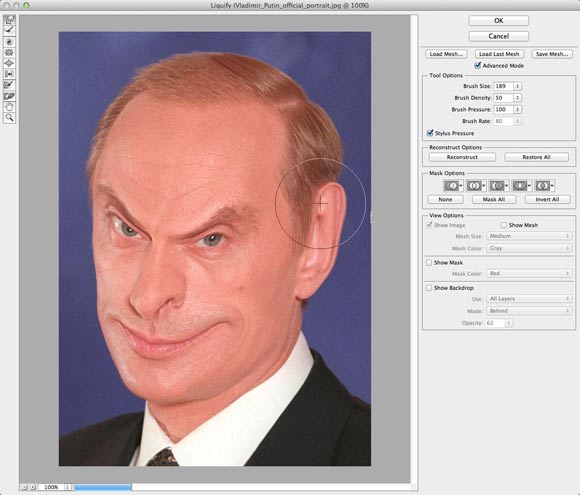
The new features
The first thing you notice about Photoshop CS6 is its new interface. You now have the choice between four base colours, from near-black to pale grey - so Photoshop can look more like Lightroom if you choose. Everything has been subtly tweaked, from the hundreds of redesigned icons (the Pen and Lasso tools now indicate their active hotspots more clearly) to a crisper, more consistent layout.
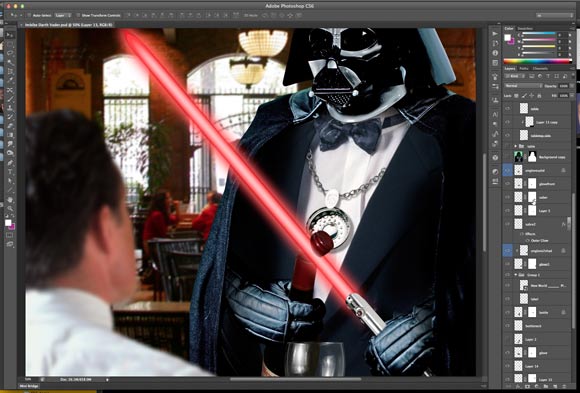
New HUD with key info
A new Head Up Display system (HUD) in Photoshop CS6 provides key information right at the cursor. This is context sensitive, so will show dimensions when dragging out a marquee, angles when rotating a selection, and so on. It also applies to the three new Blur filters, each of which provides a different type of blur - Field, Iris and Tilt Shift - with strength and radius controls directly on the image, rather than just in a side panel. All three new filters are also GPU accelerated for real-time previews.
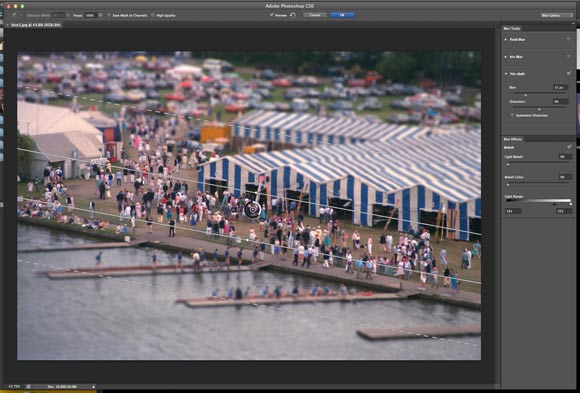
Photoshop CS6 filters
There's just one new tool in Photoshop CS6, the Content-Aware Patch tool, which takes the technology introduced in CS4 (Content-Aware Scaling) and CS5 (Content-Aware Fill) and extends it to a tool that allows us to select and move or extend objects in a scene, patching their original location more or less seamlessly. In practice, the results depend very much on having the right image; it's a great idea, but doesn't always come up with the goods.
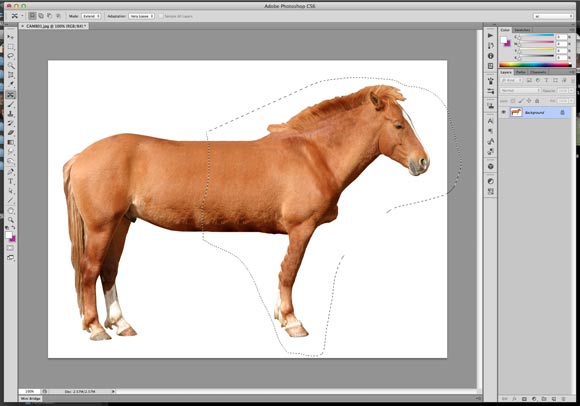
A major new filter is Adaptive Wide Angle, which allows you to correct camera distortion simply by drawing over lines that should be straight. A hugely powerful tool, it allows even stitched panoramas with multiple perspectives to be corrected into a single landscape shot.
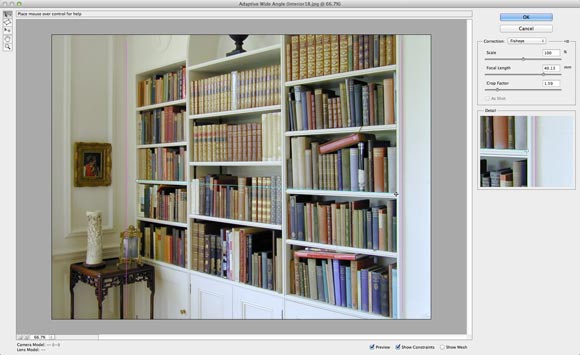
Enhanced Camera Raw
Also good for photographers is the enhanced Camera Raw dialog, which now has more powerful versions of tools such as Clarity (there's now no halo effect, even at maximum strength) and Defringing (the controls are gone, replaced by a single checkbox which just does the job). For the first time in Photoshop CS6, it's also possible to apply localised noise reduction.
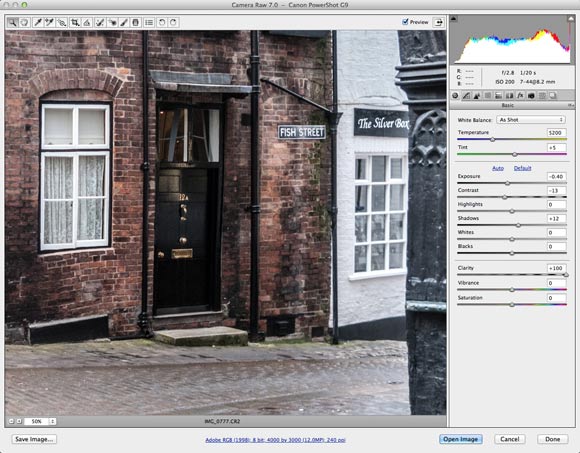
Lighting Effects filter in Photoshop CS6
The Lighting Effects filter has had a major overhaul, ditching the previous tiny preview in favour of a full-screen, GPU-accelerated preview that shows changes in real time. It's of particular benefit to Mac users, for whom Lighting Effects disappeared in Adobe Photoshop CS5 unless they were running the program in sluggish 32-bit mode.
Designers will love the new Paragraph and Character Style panels in Photoshop CS6, which allow favourite combinations to be set and adjusted at will - as well as the fact that Shapes layers are now true vector objects, which means you can now apply strokes inside, outside and centred on paths, as well as being able to stroke open paths. Those strokes can now be dotted and dashed, and can be filled with gradients.
Adobe Photoshop CS6 will now not only save in the background, allowing you to carry on working while it's saving, but will also auto-save a version avery few minutes so that, in the event of a crash, you can pick up from where you left off. If you still manually revert to a saved file, though, it will always go back to the one you deliberately chose to save, rather than its own intermediate version.
The Crop tool has been reworked so that cropping now pans the image behind the crop window. It seems a little unintuitive at first, until you rotate a crop, when it suddenly makes sense: now, the image rotates behind the window, so you can see how it will look without having to crane your neck as you did previously.
The Select Color Range tool now has an option to select skin tones - and, within it, a separate option to select faces. In practice, it works remarkably well: it's not perfect, and when used in conjunction with a mask on an Adjustment Layer it will require some manual fine-tuning, but it's a big help.
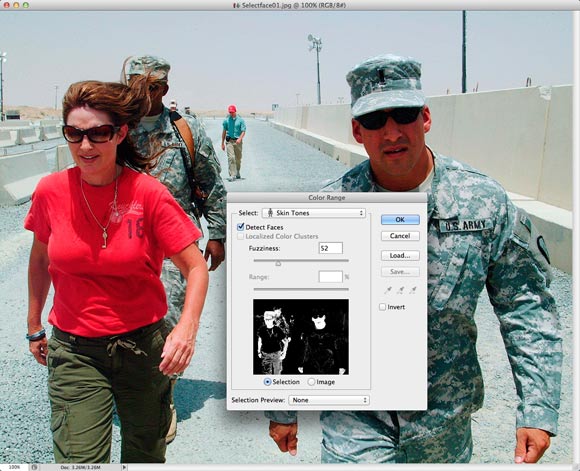
Extending Actions in Photoshop CS6
Actions, the means by which you can automate repetitive tasks, have been extended so that they can now store brush movements as well as menu and selection choices. This means that for the first time it's possible to record an entire painting operation, and have it played back with a single keystroke.
Layer tweaking
Photoshop CS6 includes a lot of small enhancements that will generally make much life easier for those working on complex artwork. The Layers panel now has built-in filtering, so you can choose to view just layers set to Hard Light mode, or those containing text, or Smart Objects, or Adjustment Layers - or just about any parameter you can think of. It's now possible to change opacity, light mode and colour coding on multiple layers, so if you search for all the text layers in a document you can change them all to yellow for easy reference. The Mask and Adjustment panels have now been combined in a new Properties panel, which is resizable for ease of adjustment.
It's also now possible not only to use Layer Groups as the basis of Clipping Masks, but to apply Layer Effects to an entire Group - previously, they could be applied only to individual layers. And the Eyedropper tool has now been tweaked so that it can sample underlying layers as if intervening Adjustment Layers weren't there, which makes patching and retouching very much easier.
Beyond image editing in Photoshop CS6
Users of the Regular edition of Photoshop CS6 will be delighted to learn that movie editing capability has made the leap over from the Extended edition. This means everyone can now edit movies right inside the app: you can apply all the standard selection of filters and distortions to moving images, as well as adding animated layers on top.
You'll still need to buy the Extended edition if you want to use the 3D Layer tools, which have had a major overhaul in this release. New HUD controls allow you to extrude, revolve and twist 3D objects directly in the middle of the artwork, as well as adding bevels and inflation.
Changing light direction is simply a matter of shift-clicking on a shadow and dragging to where you want it. There are many more 3D enhancements, including text and Bezier outlines on extruded shapes that can be edited after extrusion has been applied, and the ability to define a Ground Plane inside the Vanishing Point filter, and then use it as the basis for snapping 3D objects and locating shadows.
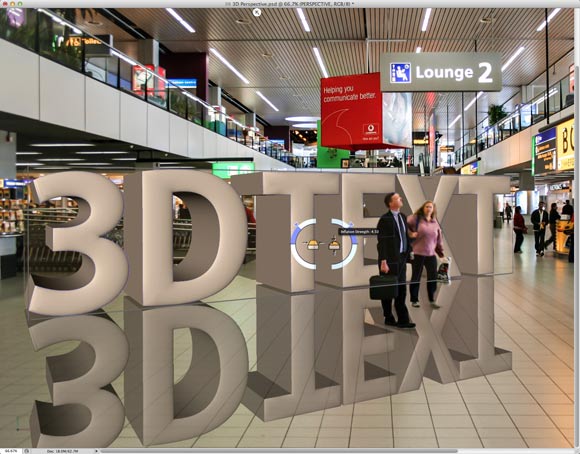
Creative Cloud update
Now available as part of a Creative Cloud subscription, Photoshop weighs in at around 670MB. Once you've signed up for Adobe's new service, you simply download an installer app, which keeps tabs on the apps you have on your system. And this isn't software 'in the cloud'; Adobe Photoshop CS6 is still installed on your system, and you don't have to stay connected to the web to use the app. This means that the initial download can take a fair bit of time, so ensure you factor this in before you start the installation process.
We've only just started using Creative Cloud, but the option to store your files in the cloud, quickly drag and drop images into the browser, create colour swatches from your pics, and add the ASE swatch files to Photoshop is already getting us excited. There's not a huge amount of integration with Photoshop just yet, but with the option to roll out incremental updates via the Creative Cloud service, we can't wait to see what Adobe has in store over the coming months.
Photoshop CS6 pricing
Full £556 (ex VAT), Upgrade £159 (ex VAT), £38.11/month as part of annual Creative Cloud subscription and £57.17/month as part of month-by-month Creative Cloud subscription. For details on where to buy, please visit the Adobe Store.
Photoshop CS6 system specs
For system specifications for Adobe Photoshop CS6, and other apps in Adobe CS6, please visit our Adobe system specs page.
Designer views of Photoshop CS6
We've spoken to a number of designers from across the creative landscape - from 3D, web design, illustration and more - and asked them to reveal their favourite new features in Photoshop CS6. Here's what they had to say! (Click below to see their views.)
Dan Mall on Layers improvements in Photoshop CS6

"Cmd+J formerly only duplicated single layers; now you can use it to duplicate groups, vectors… anything in the Layers palette. I'm a heavy keyboard user in Photoshop CS6 because it helps me use the app much faster than I can with a mouse, and this shortcut is one of my most used go-tos."
Dan Mall is founder and director at SuperFriendly. He is also technical editor at A List Apart, and - via his love/obsession for typography - he is also the co-founder of Typedia and swfIR.
Tom Muller on saving and the new UI in Photoshop CS6

"The best thing for me, without a doubt, is the ability to save files in the background. Gone are the days when I have to stare at my screen while a 500 MB file is being saved, trying to will the progress bar to go faster so I can continue. Now I can work on 2-3 files without having to momentarily break up my workflow while I save another. Also, the new interface modes are great. Took a few days to get used to it, but the dark UI makes a ton of difference."
Tom Muller is a graphic designer and art director, and operates out of helloMuller Ltd. You can also find Tom on Twitter, and he's well worth following.
Brian Hoff loves search and styling in Photoshop CS6

"Layer searching and paragraph/character styles were two features released in Photoshop CS6 that I've been frantically waiting for since starting in Photoshop. They are both a huge timesaver. Autosave and auto recovery are also extremely useful – especially for those 'unexpected' quits."
Brian Hoff is a graphic designer based in New York. He mostly works on websites, user interfaces and brand identities, concentrating on "solving problems by balancing usability and accessibility with memorable, timeless designs".
Mike Griggs is another fan of auto-save in Photoshop CS6

"The key items I like about Photoshop CS6 aren't the fancy content aware tools, lovely as they are, but the deeper infrastructure changes. The standout is the background save and file auto-recovery, which have secured my work on more than one occasion. It is reassuring to see files save by themselves when you quit, which easily justifies the upgrade."
Mike Griggs is a 3D, vfx and digital expert, and is also a valued member of the growing Creative Bloq Contributor Network.
Ade Mills loves the crash preotection in Photoshop CS6

"One long overdue improvement in Photoshop CS6, and definitely my fave feature, is the auto-recovery and background saving. How Adobe never featured this before baffles me but it's a relief that it's now there. So many projects have seen setbacks or different end results due to a crash mid-flow. Sometimes its hard to stop mid-flow to save, as it breaks your concentration."
Ade Mills is a a graphic designer and artist currently studying BA Hons in Digital Media Design at Brighton University.
Geof Crowl loves how Photoshop CS6 snaps to whole pixels

"My favorite feature in Photoshop CS6 is how well it snaps to whole pixels. I haven't see any mention or advertisement of this feature anywhere, but it was definitely the one I noticed the most. It saves a lot of time and reduces my headaches by at least 20%. CS5 was terrible at dealing with this. It lead to soft vector objects unless every object was carefully tweaked with the transform tool to attain pixel perfection."
Geof Crowl is a designer and developer at interactive design consultancy Welikesmall.
Mike Lane on his favourite UI improvements

"Some love it and some hate it, some may not call it a 'feature', but I'm a huge fan of the new dark UI and more logical enhancements of panels and tools. I do a fair amount of my work at night and in darkened rooms and the charcoal UI has helped me immensely with not only reducing eye strain, but also allowing the interface to blend into the background far better than previous versions. It's easier than ever for me to focus on the project at hand and let the UI simply fade away. Switching to other apps afterward can be a pretty jarring experience, but that just goes to show what a huge difference this makes.
"On a more functional level, applying layer styles and clipping masks to entire groups is a tremendous time saver when building things such as buttons. No more copying and pasting styles. The new type styles and crop tool are also fantastic additions in CS6 that I use daily."
Mike Lane is a senior UX designer, with 15 years of experience in web and graphic design. You can follow him on Twitter here.
Sam Hampton-Smith on scripted pattern fill

"An excellent addition to Photoshop CS6 is the new scripted pattern fill feature. I love how genuinely randomly positioned elements can produce unexpected effects, especially with the subtle shifts in hue and saturation that come with it."
Sam Hampton-Smith is a graphic designer and principle at hampton-smith graphic design studio.
Known issues
Before jumping in, it's worth acquainting yourself with current issues in CS6. Currently, on Mac, you cannot install to the root directory of the boot drive. And for more detailed info on troubleshooting your installation, go to www.adobe.com/go/support_loganalyzer.
Also, as of writing, you can't install on case-sensitive file systems.
Lastly, if you are running Microsoft Windows XP with Service Pack 3, Photoshop will run in both 32-bit and 64-bit editions, but with the caveat that Adobe does not officially support the 64-bit edition, and so you may run into problems.
Adobe Photoshop CS6
Photoshop CS6 is a major upgrade that will appeal to many kinds of users. Montage artists and retouchers will appreciate the new Blur and Liquify filters, the HUD controls and the ability to sort layers by type; designers will value the new text and Shape tools; and anyone with a recent digital camera will find the movie editing functionality a major bonus. Those who fork out for the Extended edition will find 3D object creation is easier than ever, and the new ability to match the 3D perspective with the perspective of a photographed scene means 3D objects can be seamlessly integrated into your artwork. But what really marks out this version is the time-saving nature of the enhancements, which means it should pay for itself in a very short time. Everything feels slicker, smoother and more sure; the fact that so many filters now act in real time means there's no waiting for the computer to catch up with your actions. It's definitely a recommended upgrade.
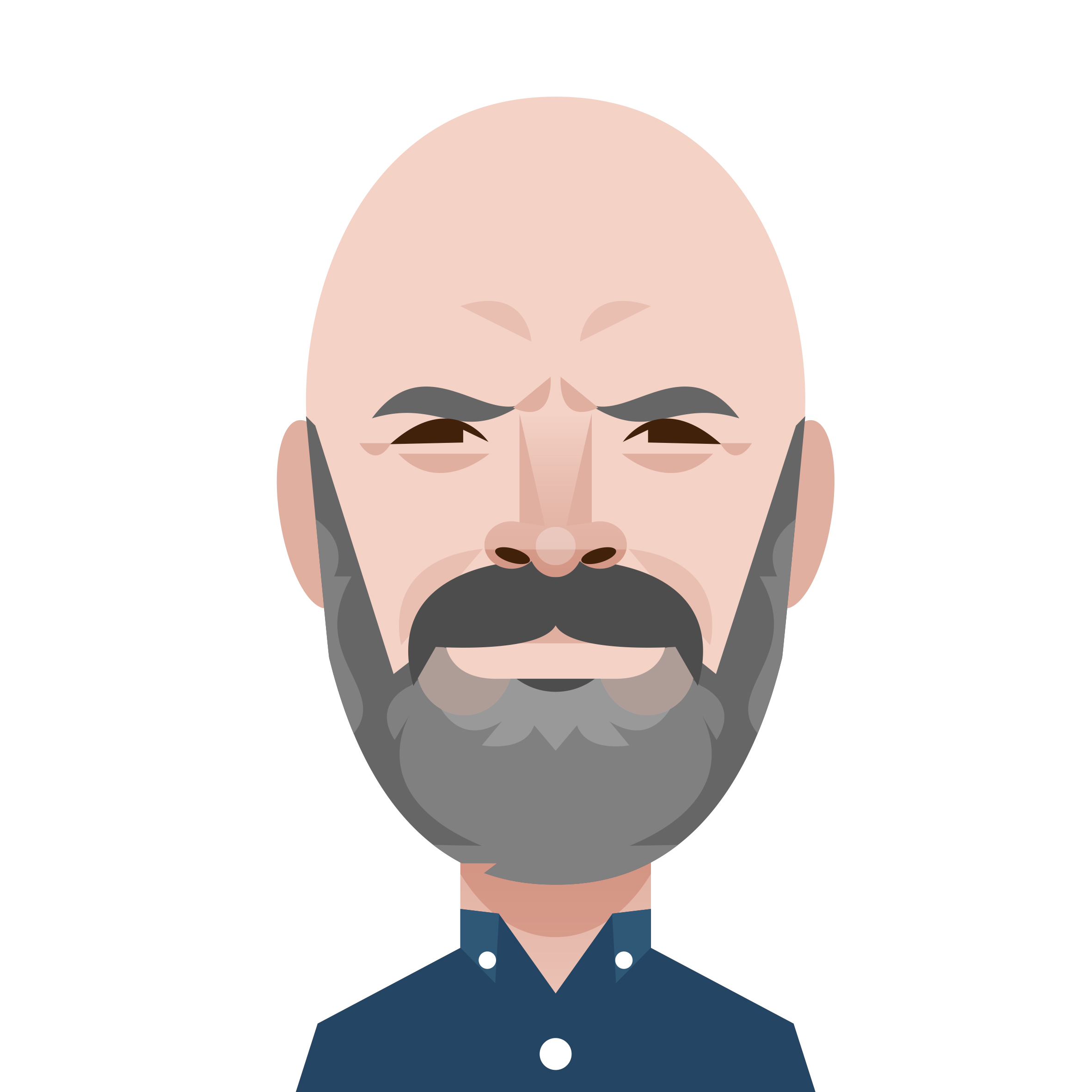
Over the last 20 years Dan Oliver has edited a number of print magazines and websites, and has written for publications including the Sunday Times, the Guardian, the Manchester Evening News, Manchester United Magazine, T3, and many more.
how to flip a layer in photoshop cs6
Source: https://www.creativebloq.com/graphic-design/adobe-photoshop-cs6-review-1233260
Posted by: upshawwishoune1988.blogspot.com

0 Response to "how to flip a layer in photoshop cs6"
Post a Comment